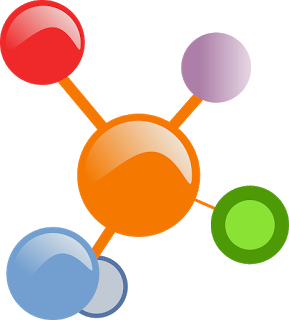“CIO Master” Book Tuning: Three Questions to Assess Talent Management Effectiveness
 To compete in today’s hyper-competitive digital environment, businesses rely so much on their people assets or human capital, to reach their goals and succeed. Digital leadership gap, innovation gap, IT skills gap, or overall business talent gaps are not fictions, they are the reality. What are root causes of the scarcity of digital leadership and poor talent management, and which questions should you ask to assess talent management effectiveness?
To compete in today’s hyper-competitive digital environment, businesses rely so much on their people assets or human capital, to reach their goals and succeed. Digital leadership gap, innovation gap, IT skills gap, or overall business talent gaps are not fictions, they are the reality. What are root causes of the scarcity of digital leadership and poor talent management, and which questions should you ask to assess talent management effectiveness?
What leadership, functional, and industrial competencies are needed to achieve corporate strategy? There is no one generic set of leadership skills. Effective leadership differs by level, the type of organization, the stage of organizational evolution, the mindset of stakeholders (particularly boards of directors), the complexity of the product, the national and political culture, and many other variables. There is no magic talent management formula as well, too often, leaders are allowed to complain generically about what they mean by skill and competency gaps and often they pick the symptom, not digging through the root causes. Every organization must address their common and unique skills requirements and map that out through skills/competency matrix within their organization. For example, broadly speaking, across the industrial or functional border, creativity has become the #1 desired quality either for leaders or digital professionals. Creativity to some extent is the nature of seeing the patterns that already exist, and then being able to predict how they change, and sometimes manipulate them in a direction that fits our needs or that of our objective, to come out an alternative way to solve the problems. To spur creativity, organizations have to innovate their talent management, encourage “out of box” thinking and leverage digital platforms to build their creativity competency.
What competencies do you have? What’re the capability gaps that are identified? What kind of framework would ensure high-quality assessments of current talent competencies? It is important to make an objective assessment of your talent competencies, identify your collective business capability gaps. It is not a simple task because most teams operate with an incomplete and relatively small view of the world. So their views of talent gaps are often based on the immediate need at the operational level, but the lack of a clear link between talent competency and long-term business strategy. In order to build high-effective teams, foresightful organizations should always look for the complementary mindsets, capabilities and skills that they don't have so that they can build a winning team and complement each other. Statistically, the heterogeneous team with the cognitive difference is more innovative than the homogeneous group setting, as good ideas are multi-dimensional, they take root in unsuspected places and they evolve with time and by unexpected connections.
 How to innovate talent management and performance management? The performance management in the majority of organizations are still the static annual event, take the industrial style approach to collect certain quantitative data point, it is not sufficient to adapt to the digital management philosophy - taking a holistic and innovative approach to integrating people management, culture management, and performance management, with the very goals to build a creative working environment, encourage creativity, and ensure, the purpose of reviews is improvement about the future. The past is over. Move the purpose of performance reviews away from "evaluating" the past, and to improving success in the future. The best reason to do the performance management is to work with employees to improve their performance regardless of current level, so they can better contribute to organizational goals. It is also critical to leverage the latest technology and tuning performance management systems and processes which are gradually moving away from a static, unidirectional, and time-bound avatar to a more dynamic, continuous, and interactive state. Improved transparency, goal tracking, real-time feedback, and enterprise-wide acknowledgment/recognition of achievements are some of the key drivers, which result in the adoption of digital and social performance management systems.
How to innovate talent management and performance management? The performance management in the majority of organizations are still the static annual event, take the industrial style approach to collect certain quantitative data point, it is not sufficient to adapt to the digital management philosophy - taking a holistic and innovative approach to integrating people management, culture management, and performance management, with the very goals to build a creative working environment, encourage creativity, and ensure, the purpose of reviews is improvement about the future. The past is over. Move the purpose of performance reviews away from "evaluating" the past, and to improving success in the future. The best reason to do the performance management is to work with employees to improve their performance regardless of current level, so they can better contribute to organizational goals. It is also critical to leverage the latest technology and tuning performance management systems and processes which are gradually moving away from a static, unidirectional, and time-bound avatar to a more dynamic, continuous, and interactive state. Improved transparency, goal tracking, real-time feedback, and enterprise-wide acknowledgment/recognition of achievements are some of the key drivers, which result in the adoption of digital and social performance management systems.
People are always the most important business assets, but also the weakest link in strategy management, talent management effectiveness directly makes an impact on strategy management effectiveness. Make the great investment on the people, to not only motivate their better performance but also unleash their full potential and build a collective human capability to achieve the high performance of the business for the long run.
Follow us at: @Pearl_Zhu
Published on May 31, 2016 22:44
No comments have been added yet.



